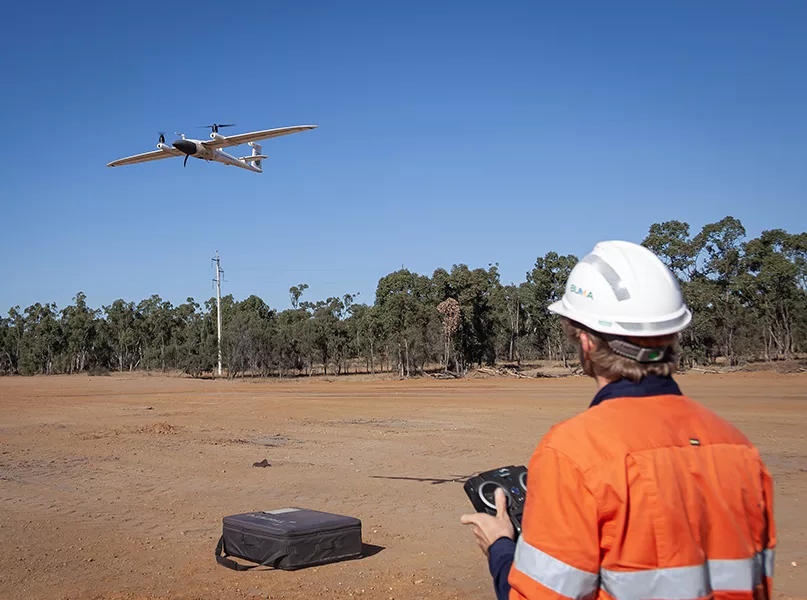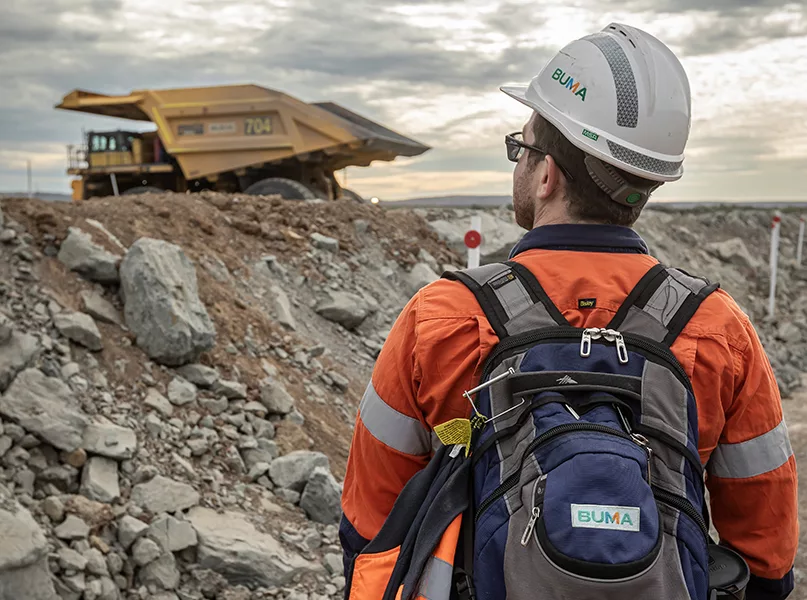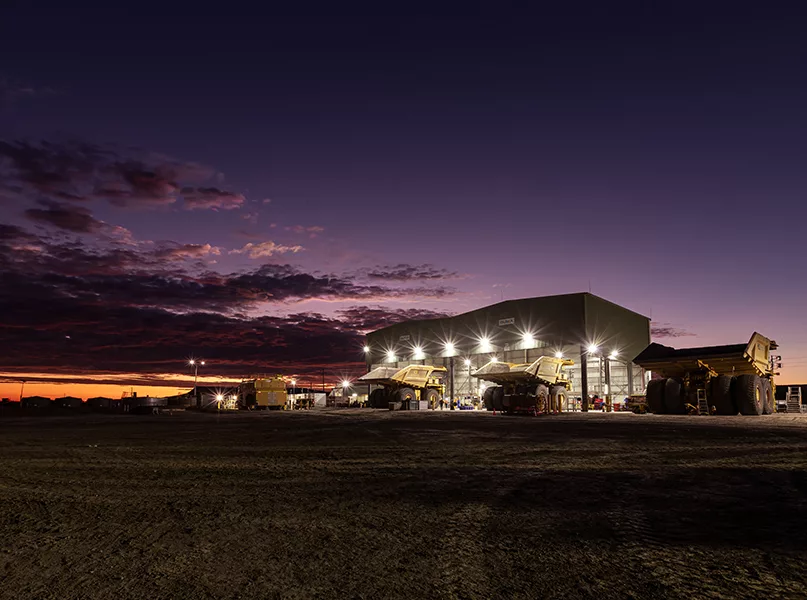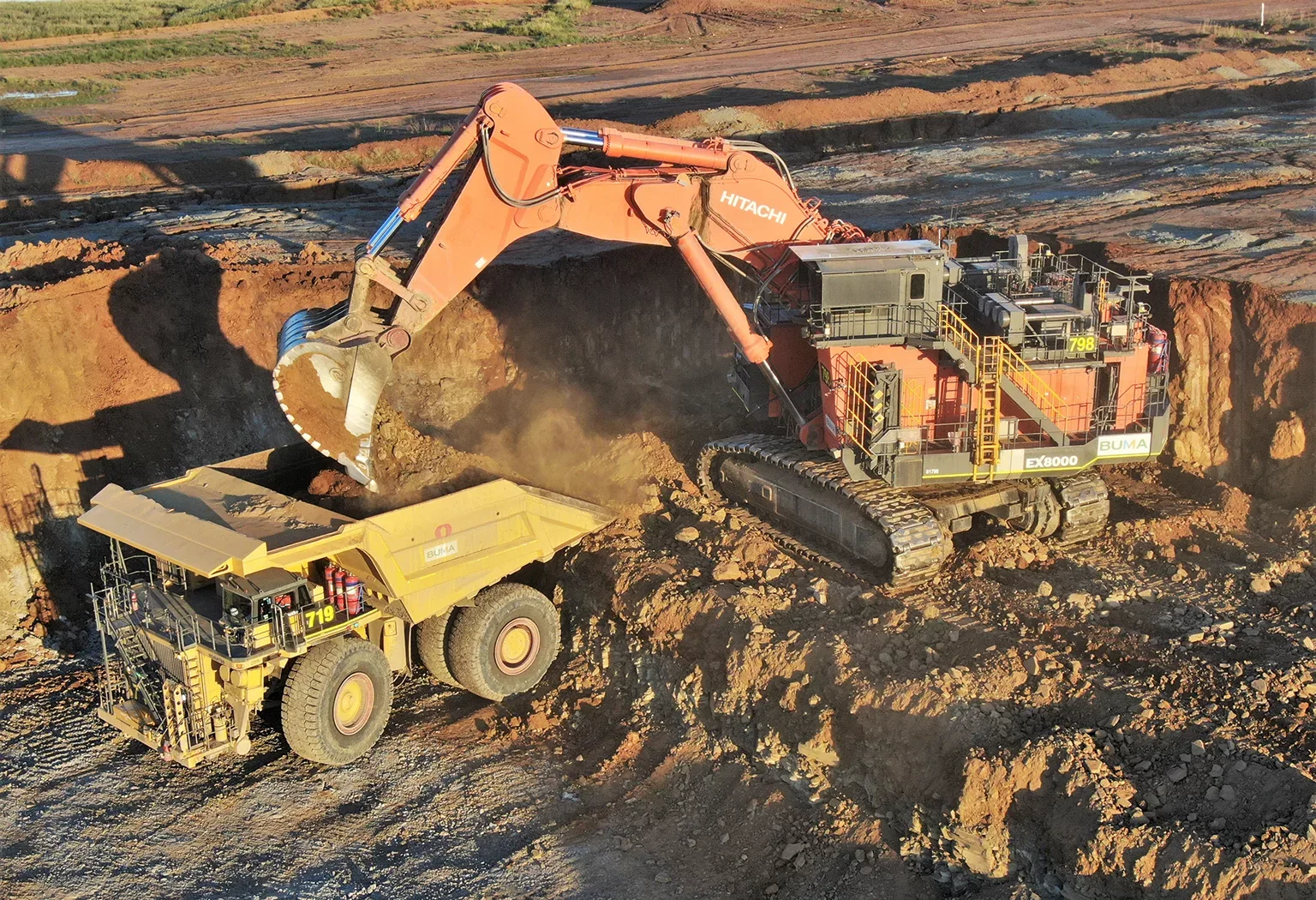BUMA Australia has a vision to build a modern mining and rehabilitation company, that drives growth, sustainability, and prosperity. We dig deeper into the company’s story with Chief Operating Officer, Russell Taylor and General Manager- Rehabilitation, Ngaire Tranter.
UNEARTHING AUSTRALIA’S MINING POTENTIAL
Since the beginning of civilisation, earth’s resources have been mined and subsequently used to make energy, manufacture, and create wealth and trade. Contract Mining has been a part of this in some form or another.
Fast forward to the 21st century, and the global mining industry is booming, as a multitude of elements and rare minerals are in high demand as a direct result of the introduction of new technologies, energy solutions, and goods that are required across the world. Today, contract mining services play a major role in mine site development, the extraction of ore, and mine site rehabilitation – through to mine closure works.
Mining in Australia is a vast industry that remains famous worldwide due to its fascinating history, power in the export market, and its role as a trendsetter in ‘futureproofing’ the wider mining sector.
Furthermore, the high quantity of mining sites in the country means that the industry provides a sizable prospective job market for Australian citizens, as well as for the number of foreign workers who want to work in the field due to its esteemed global standing.
The Australian mining industry has become more efficient at extracting maximum product but in a more sustainable way. No longer is mine site rehabilitation an afterthought to mine development, it is planned for at the pre-feasibility stage of the mine life cycle. New technologies are being embraced in rehabilitating mined areas and also in the monitoring and maintenance of the rehabilitated land.
The mining industry currently finds itself in a dynamic period of change, as the collective focus has turned to developing efficient mechanisms to manage environmental and social considerations, whilst maximising resource extraction.
Additionally, the industry as a whole is striving for an enhanced quality of rehabilitation as opposed to a focus simply on obtaining quantity.
BUMA Australia (BUMA) is well placed to provide this high-quality rehabilitation delivery and practices, which is demonstrated by the work it has conducted for clients in the past, and present and will continue to do so in the future.
“With the increase in prescriptive compliance in environmental licensing, we’re currently working closely with our clients in the implementation space to essentially operationalise planning documentation that is designed for seeking environmental approvals and associated licensing,” introduces Ngaire Tranter, General Manager – Rehabilitation of BUMA.

AUSTRALIA: A HISTORICAL MINING GIANT
At present, approximately 1.2 million people are employed in the Australian mining industry, with the sector’s net worth of exported resources totalling an estimated AUD$160 billion.
Existing as a nation with an abundant supply of metals and materials, the country has naturally enjoyed a long and successful mining history, dating back to its first human habitation around 60,000 years ago.
The First Nations people initiated Australia’s first-ever mining operations, which included fossicking for stones suitable for weapons and tools and digging for ochre. This was then used for making pigments for the paint used in rock art and body painting, forming an integral part of their culture and distinctly unique heritage.
Later, upon the arrival of European settlers to Australia, the process of large-scale mining truly began. The first reported discovery of coal occurred in 1791 and was found by a family of escaped convicts, William and Mary Bryant, and their children.
This defining discovery was unearthed just three years after the arrival of the first fleet of settlers. The exact location of the find is unknown, but it is believed to have been located in Glenrock Lagoon in the Newcastle and Hunter regions of New South Wales (NSW).
Eight years later in 1799, coal was being exported with shipments that were sent regularly to India, thus initiating a long and prosperous history of exporting mined materials.
Lead mining began in 1841, which was shortly followed by copper in 1842. Both resources were regarded as monumental developments for the Australian economy, with the subsequent gold rush era in the 1850s catapulting the nation firmly onto the global map.
Gold was first discovered in NSW in 1823, and in the decades following, more and more influential finds were dug up across Australia.
The exciting news of the discovery of gold spread worldwide, and as people began emigrating to the country in huge numbers, population growth increased exponentially alongside fresh agricultural and industrial development. The transformations of the 1850s saw Australia producing approximately a staggering 40 percent of the world’s gold supply.
However, during the first half of the 20th century, the nation witnessed a steady decline in mining activity, with new mineral finds becoming more and more scarce. Subsequently, during the second half of the century, Australia once again witnessed a resource boom, with discoveries including nickel, oil, natural gas, and uranium. These prominent discoveries prompted a resurrection of global interest in the country’s mineral resources.

AUSTRALIA: KEY MINING LOCATIONS
With abundant resources, it is no surprise that mining is so prevalent throughout Australia.
Specifically, Western Australia (WA) is widely considered the epicentre of Australian mining and a major force in the industry worldwide. It is home to a vast number of natural resources and some of the country’s largest mines
WA currently plays host to 98 percent of Australia’s iron ore and 60 percent of the country’s gold reserves. These plentiful resources mean that at present, more than 20,000 people in WA work in the mining industry.
These are particularly exciting times for the Queensland mining sector, as growing demand has meant that explorations for new mines have begun in the north and east of the state, with the potential to create even more jobs in the future.
In the 2021/22 financial year, the Queensland mining industry contributed a record AUD$94.6 billion to the Australian economy.
Staggeringly, despite its large number of mines and impressive economic contribution, the industry only takes up 0.1 percent of the state’s surface area.
Victoria, meanwhile, continues to play a significant part in the country’s mining history. In 1851, gold was discovered in Ballarat, which triggered the gold rush that gripped the country and the wider world. It is still a key location for the production of gold, brown coal, mineral sands and antimony today, and is filled with great potential for future mineral exploration.
Mineral projects play an important role in regional development within Victoria, whilst mining creates lucrative employment for regional Australians and supports a broad supply chain of businesses.
The state is additionally home to the Fosterville Gold Mine, the largest gold mine in Victoria. Exploration also proceeds elsewhere, such as in Glen Wills, an isolated mountain area near Mitta Mitta in north-east Victoria.
Recently, a spotlight has been placed on the growing demand for green energy alternatives and battery technologies. Therefore, mineral exploration is widely underway with a particular focus on vanadium and lithium.

AN EXPLOSIVE START FOR BUMA
BUMA was established in 2021, to acquire the Open Cut Mining Business of Downer. This acquisition included the transition of all people, mining services contracts, assets, systems, and IP from a business that successfully provided mining services in diverse locations across many commodities since 1922.
In only two years of operating as BUMA, 750 new employees have joined the business, the number of operations has increased by 57 percent, and the size of the business has doubled. BUMA has exploded onto the Australian market and further strategic growth is planned.
BUMA’s rapid growth has been based on the quality of services that it provides its clients and its strict adherence to the company’s core values. BUMA pursues a relationship-based long-term approach and willingness to work with clients to ensure the mutual success of all projects.
“Ensuring we provide value to our clients through all stages of mining, including rehabilitation, is a mainstay of our business,” Taylor informs us.
With a strong focus on delivering optimal outcomes for our clients and a strong commitment to safety, innovation, and technology BUMA Australia has quickly become one of Australia’s leading mining contractors.
BUMA AUSTRALIA PARTNERS

































